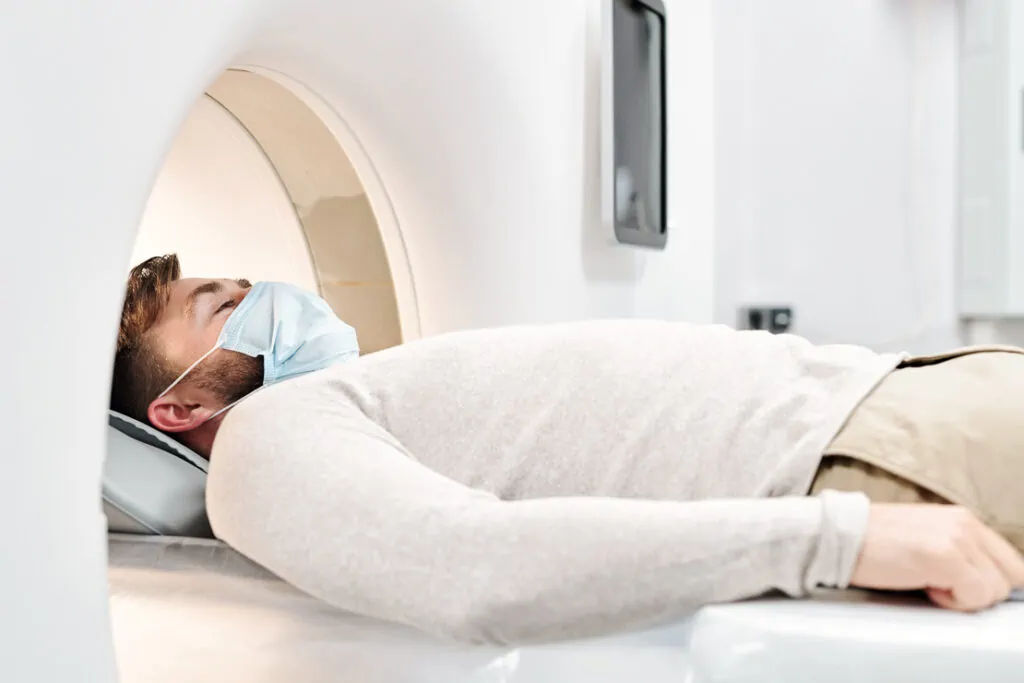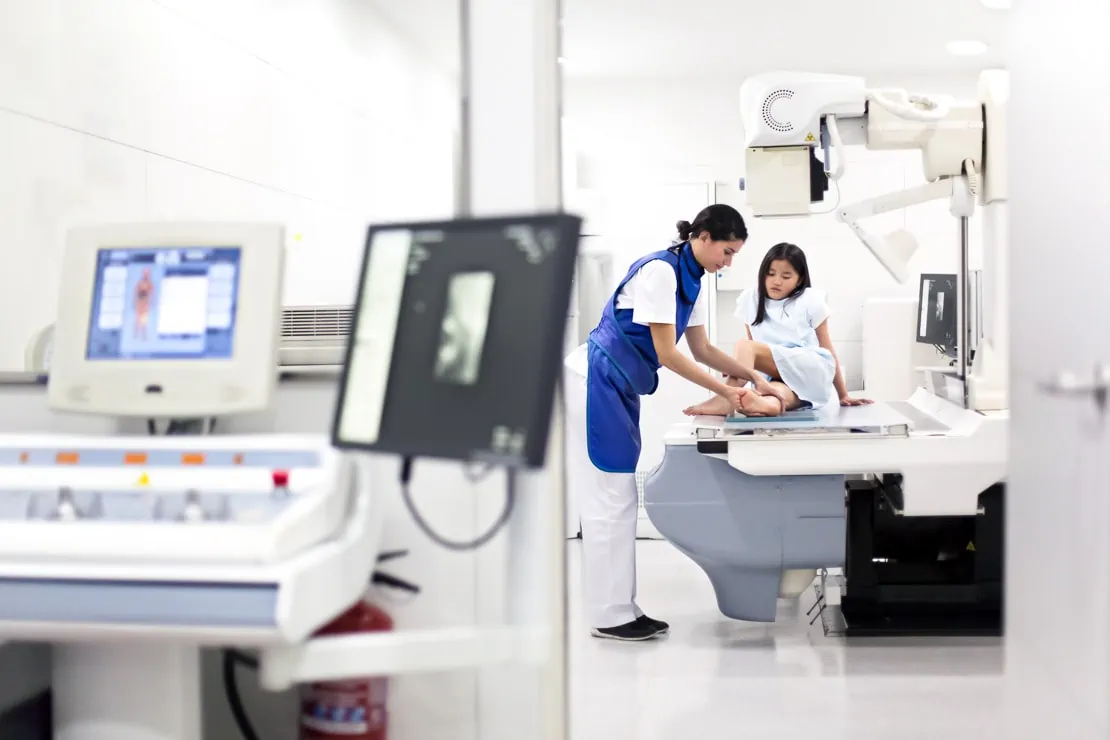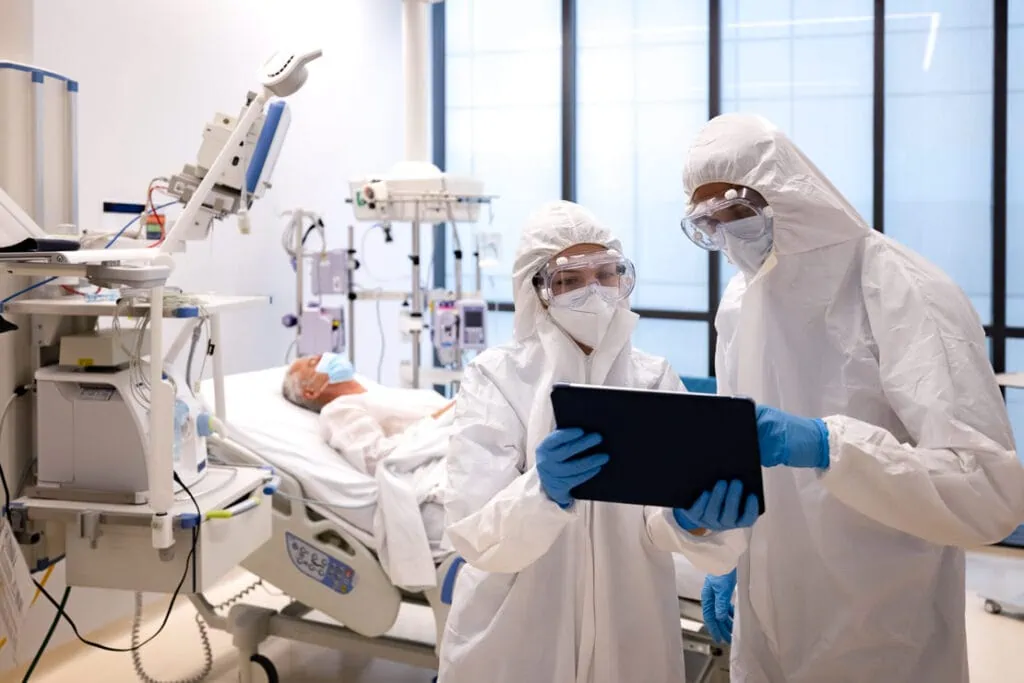- By Miriam Friedmann
Radiation protection in radiology in a nutshell
Whether for X-rays or computer tomography, radiation protection is essential for medical staff and patients. To ensure this, there is the German Radiation Protection Act. Among other things, it regulates, that radiation doses must be documented digitally, and which incidents must be reported. This article briefly summarizes what radiologists need to know.

Radiation protection for personnel and patients: The German Radiation Protection Act
The German Radiation Protection Act (StrlSchG) regulates all necessary measures to protect persons, property and the environment from the dangers of ionizing radiation, for example, personnel and patients during X-ray examinations. The German Radiation Protection Act is supplemented by the Radiation Protection Ordinance, which further specifies the provisions of the Radiation Protection Act.
The Radiation Protection Ordinance was last revised in 2018 and since then has stipulated, among other things, that the radiation doses administered must be documented digitally to protect staff and patients. The last deadlines for existing radiological equipment have expired in January 2023.
Innovations in radiation protection
In order to fulfill the documentation requirements stipulated in the Radiation Protection Ordinance, radiologists must digitally document the doses administered. This means that incidents can be reported more quickly - for the protection of patients - and can be traced more easily.
For devices from the inventory, transitional periods still applied up to now. Since January 2023, all modalities must now digitally document the doses administered.

Software-supported documentation in radiation protection
In order to record and evaluate deviations from the reference values, there are special software systems for radiologists, so-called dose management systems.
They offer various functions for digital documentation such as notifications in the event of dose exceedances or evaluations of past examinations.
The dose management system automatically receives the required information from the modalities. This makes it easier for radiologists to fulfill digital documentation as well as reporting and information obligations.
Dose management software as a service
To enable radiologists to easily document radiation doses digitally, Telepaxx Medical Data offers the Domako dose management software. This automatically receives the dose values stored in the DICOM data, documents and evaluates them.
The special feature: At Telepaxx, you receive Domako as software-as-a-service (SaaS). It works vendor-neutral with any PACS and without time-consuming installation.
What is a significant event?
For significant incidents, there is a reporting obligation to the competent authority. The criteria to be applied for this are regulated in Annex 14 of the German Radiation Protection Ordinance.
This defines that it is a significant occurrence if the specified diagnostic reference value is exceeded by 200 percent in an individual and if the mean value of the last 20 consecutive examinations has exceeded the diagnostic reference value by more than 100 percent.
In general, dose overruns are not an exception, but occur almost daily in radiological practice, for example in X-rays. The main cause: The dose specifications refer to a reference patient. If patients are e.g. heavier than the defined reference patient, a higher dose is applied for technical reasons.
Such a dose exceedance must be documented digitally according to the Radiation Protection Ordinance. However, it does not automatically constitute a reportable incident.

Initial Consultation
You have questions?
Feel free to contact me to learn more about how you can implement AI solutions easily in your medical facility through our cooperation with deepc.
Other articles that may interest you.

The medical physics expert: role and tasks
The medical physics expert must be involved in certain radiological examination procedures. This blog post summarizes the tasks of a medical physics expert.

Bavarian Hospital Act: patient data permitted in the cloud
Bavarian hospitals have been allowed to process patient data in the cloud since June 2022. You can read about the advantages of this and what to look out for here.

European Health Data Space: a framework for sharing medical data
This article briefly summarize the purpose and goals of the European Health Data Space.